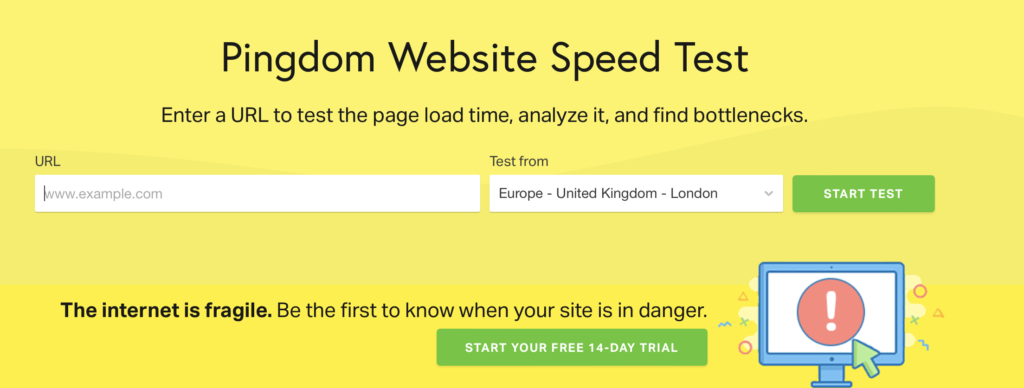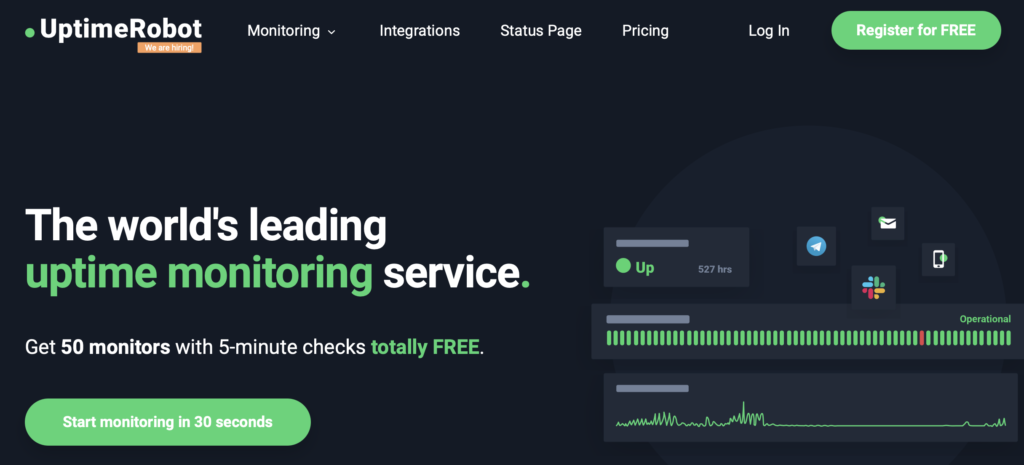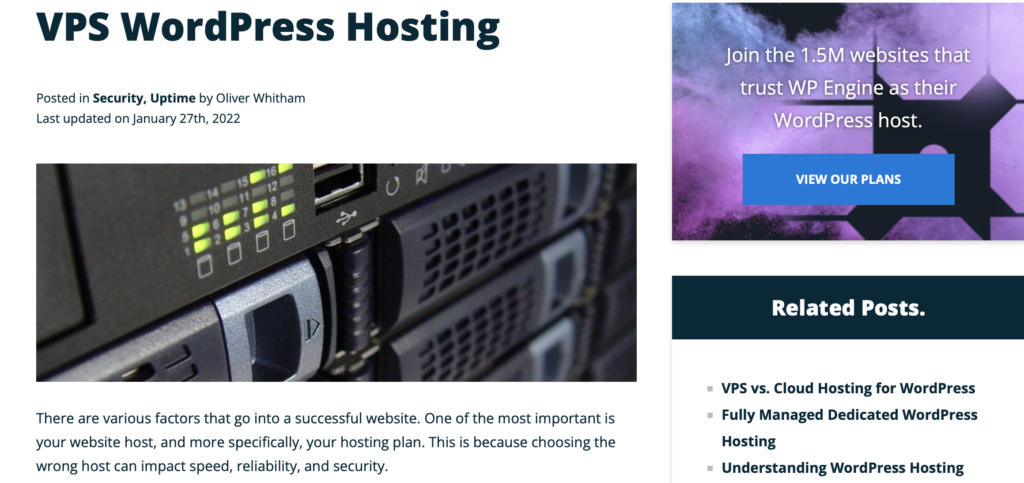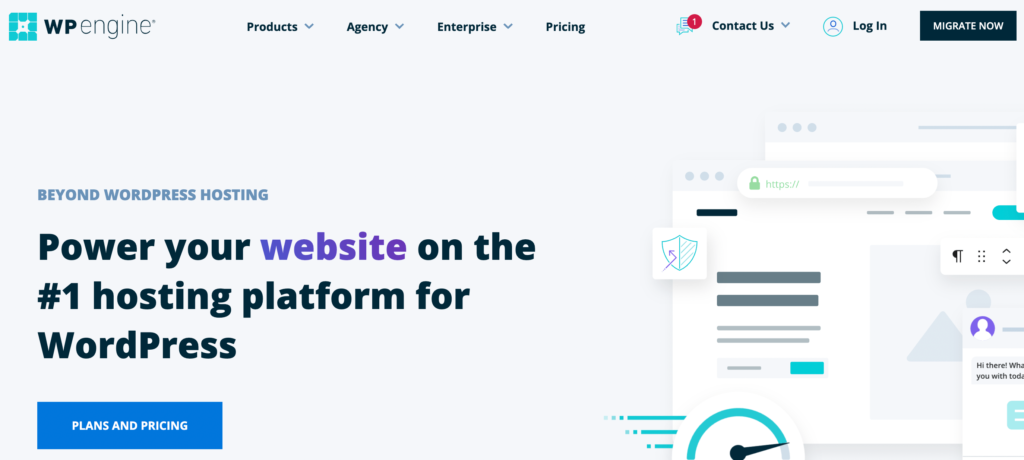There are many WordPress hosting providers on the market. However, their services can differ drastically. From extra features you don’t need to limitations on growth, your current host may not be the best match for your site.
Although, if you know what to look for, there are a few obvious signs that can indicate when you might want to switch WordPress hosting providers. For instance, slow page loading times or poor customer service may mean it’s time to look elsewhere.
In this post, we’ll discuss five situations in which it makes sense to consider switching hosts. Then, we’ll take a quick look at how to change to a new web host. Let’s get started!
When to Switch WordPress Hosting Providers (5 Situations)
Here are five clear indicators that it’s likely time to switch WordPress hosting providers.
1. Your Loading Times Are Slow
Fast page loading times are important for your website’s User Experience (UX). They can also impact its search engine rankings.
Furthermore, site speed influences ‘time on site’ and ‘bounce rates‘, which also indirectly affect organic search rankings. In fact, as page load time increases from one to three seconds, bounce rates increase by 32 percent. Then, from one to five seconds, this rate skyrockets to 90 percent.
This means you might want to aim for a 1-2 second load time. To determine if load times are an issue for your site, you can run multiple speed tests using tools like Pingdom:
If you find that your site is experiencing slow loading times, your host might be able to identify the problem. For example, if you use shared hosting, there may be too many users on the same server.
Alternatively, there may be a lack of data centers, meaning there’s a greater distance between visitors and servers. If your current host can’t find a way to optimize your site’s speed, it might be time to switch WordPress hosting providers.
2. Your Site Is Experiencing Increased Downtime
Downtime refers to any period when your site is unavailable to users. It can result in a loss of traffic and can damage your business’ reputation as trustworthy and professional.
Fortunately, there are tools like UptimeRobot to help you assess this metric:
When it comes to downtime, you’ll want to find a host that can hit at least 99.90 percent uptime. This equals roughly nine hours per year of downtime. Keep in mind that even an extra 0.90 percent can mean an additional three days of downtime for your site.
If you suspect your site has poor uptime rates, it’s best to monitor its downtime over a few months in order to verify this. After that, if you discover an issue, you might consider switching to a new host.
One of the main causes of downtime is compromised server security. Therefore, when looking for a new hosting provider, it’s important to look out for security features like firewalls and automatic daily security scans. Plus, it might be useful to consider the reliability of hosting equipment.
3. Your Host’s Customer Service Is Poor
If hosting-related issues are left unresolved, you can lose out on traffic and sales. It can also be frustrating when you’re ignored or can’t get any assistance with these problems. Therefore, it’s important that your host’s support team is knowledgeable and responds quickly.
When looking for a new hosting provider, Trustpilot is a great platform to assess a company’s customer service:
It’s also important to note that web hosts may refuse to assist with WordPress. Some claim that their support policy doesn’t cover the software. They also might be difficult to get in touch with or lack the expertise to solve your issues.
If you don’t receive the support you need with your current host, it might be time to consider switching. Additionally, when you’re looking for a new provider, you’d be wise to read the fine print about customer support and WordPress coverage.
4. You Can Find Better Prices Elsewhere
Due to WordPress’ widespread use and popularity, there are many web hosts that provide robust and affordable plans that are optimized for the Content Management System (CMS). In fact, some boast peak performance and a vast suite of features. Therefore, you might be paying for a larger plan than you need, or have access to a ton of features you don’t use.
In this case, it makes sense to keep an eye out for other deals. For example, some providers offer seasonal sales and special offers. So, if you’re not in a particular hurry, you can wait to claim the best offer. You can prioritize the plan that provides the best value when considering its price.
With this in mind, it can be a good idea to start out with a basic plan when you switch WordPress hosting providers. This way, you can avoid overpaying for features you don’t currently use or need. Plus, you can always upgrade when you decide you need more advanced features.
5. Your Site Has Outgrown Your Host
When you first created your website, you might have been looking to keep costs low. Or maybe you opted for simple plans with streamlined services.
However, if your website is growing, it will likely have different needs than it did when it first launched. For example, if your site now has lots more traffic, you might require a server upgrade to handle the increased volume of visitors.
In some cases you may be able to upgrade resources with your current provider. On the other hand, you might need to switch to an entirely different host. For instance, you can change from a shared host to a Virtual Private Server (VPS):
With a shared hosting plan, resources are distributed between all sites hosted on the server. In this case, you have no control over what the other sites are doing. Likewise, they have no say about the activity on your site.
Still, your site’s traffic can affect theirs, and vice versa. Simply put, when one site on a shared server is very busy, it takes essential resources from the other sites and can slow them down.
This can happen without warning, leaving you unprepared. If this occurs often, it can be an obvious sign that you’ve outgrown your hosting provider.
How to Switch to a New Hosting Provider
Luckily, switching WordPress hosting providers doesn’t have to be a hassle. You can get migration plugins to make the process easier. Even better, some hosting providers will include a migration service that takes care of this for you.
If you’re sure you’d like to change hosts, the first step is to choose a new one. Ideally, you’ll select a host that’s so good that you won’t need to move again.
WP Engine is a fantastic option if you’re looking for fast and secure hosting specifically for WordPress:
It’s an excellent choice for all kinds of websites, from small business sites to complex eCommerce stores. WP Engine prides itself on speed and can help you increase your loading times by up to 40 percent. This can boost your search rankings and drive more traffic to your site.
Once you’ve chosen a new host, you’ll need to back up your files and WordPress databases. The next step is to export this data to a new SQL database and upload your files to your new web host. Lastly, you’ll need to configure your DNS settings and complete the necessary redirects. This way, you don’t send users to your old site location.
This may sound a bit complicated, but there’s no need to panic. If you choose a web host with a quality customer support team, they should be able to walk you through this entire process or even take care of it for you.
Conclusion
With so many web hosts to choose from, it’s easy to end up with a provider that isn’t well-suited to your unique needs. Still, you can look out for a few clear indicators to help determine if you should change hosts.
To recap, here are five situations when you might consider switching WordPress hosting providers:
- Your page loading times are slow.
- Your site is experiencing increased downtime.
- Your host’s customer service is poor.
- You can find better prices elsewhere.
- Your site has outgrown your host.
Do you have any questions about switching WordPress hosting providers? Let us know in the comments section below!






No Comments